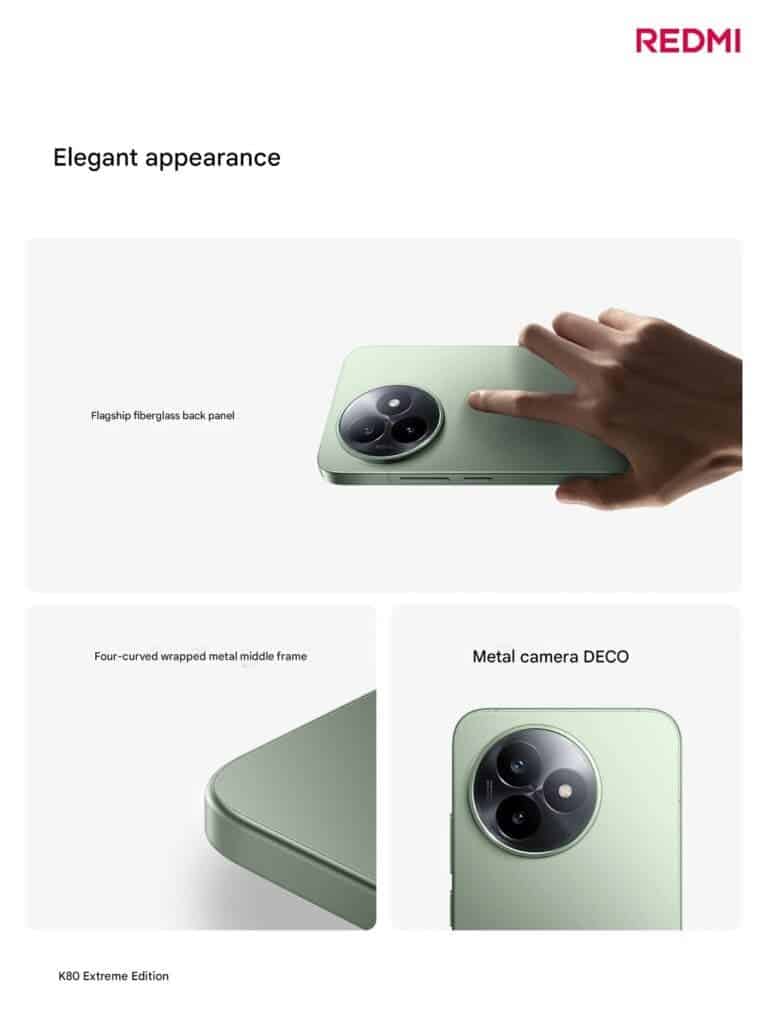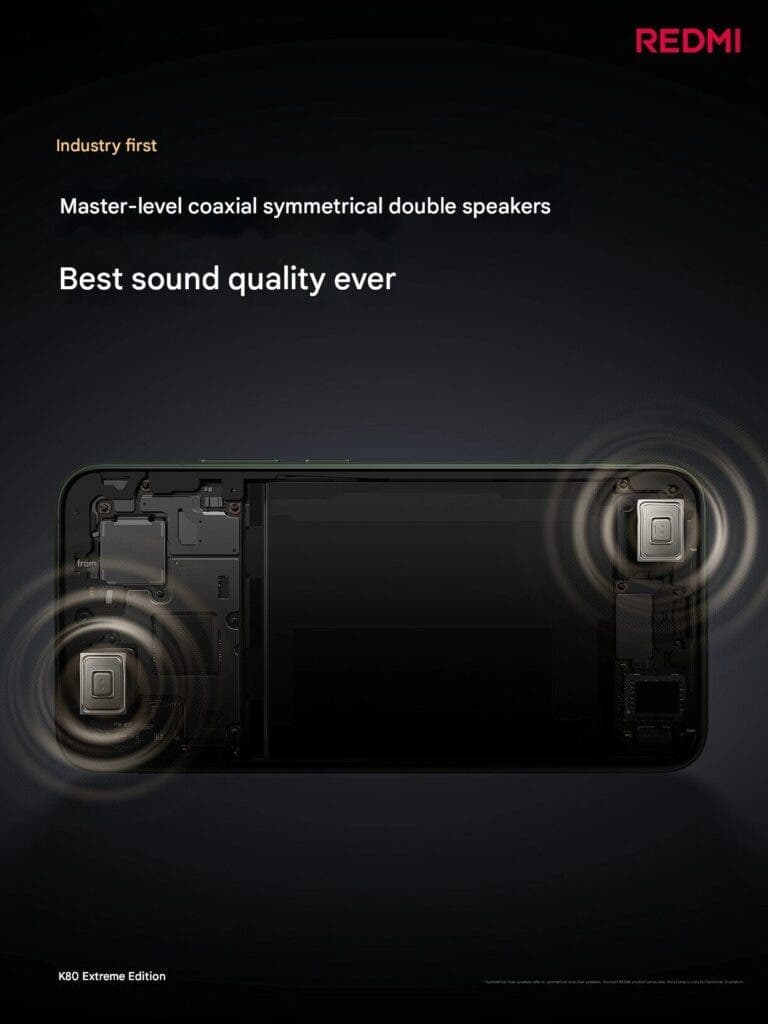PhonesTech
The Redmi K80 Ultra Is Here—And It’s Packing More Than Just Power

Nick Papanikolopoulos
June 19, 2025

A Premium Redmi? Yes, Really. Redmi, once synonymous with value-first smartphones, is now making an unmistakable shift toward the premium tier. With the unveiling of the Redmi K80 Ultra, Xiaomi’s sub-brand is pushing harder than ever into flagship territory—on paper and in design. Unveiled during the “Lu Weibing Live Chats About Xiaomi New Products” event (yes, that’s the full name), the K80 Ultra isn’t just another spec monster. It’s positioned as the most high-end Redmi yet, and it shows—from materials to internals to the unusually polished audio setup.

Redmi K80 Ultra: Let’s Talk Design First
At a glance, the K80 Ultra looks premium. It’s wrapped in a glass fiber back panel that walks the line between sleek and durable. Add in a four-curved metal frame—not just curved on the sides but subtly around all four corners—and you’ve got something that stands out next to the flatter, plainer slabs in this segment.
Xiaomi is also offering it in four color finishes: Spruce Green, Ice Peak Blue, Moon Rock White, and Sandstone Gray. Personal opinion? Ice Peak Blue is going to be the one you see in most hands.

Under the Hood: Flagship Power
The real headline feature is the MediaTek Dimensity 9400+ processor. It’s one of the fastest mobile chips available right now, and it’s paired with a dedicated D2 display chip that handles image processing separately, which should mean smoother animations and better graphics rendering under load. There’s also a massive 7410mAh battery—big, even by 2025 standards. Xiaomi claims you’ll get 2.26 days of regular use. Of course, “regular” is subjective, but still, it’s more than just marketing fluff if it holds up in real-world testing.
Cooling That Means Business
High performance needs proper cooling—and Xiaomi seems to know that. The K80 Ultra includes what it calls its largest 3D “ice cycle” cold pump system. It’s one of those phrases that sounds like PR-speak, but if it works as promised, it could genuinely help sustain peak performance without throttling. This matters, especially for gamers and multitaskers. We’ve seen too many otherwise excellent phones struggle with heat. If this system actually holds temperatures in check, that’s a win.

Redmi K80 Ultra Audio and Haptics
Here’s where the K80 Ultra does something unexpected. The phone debuts what Xiaomi is calling “Master-level coaxial symmetrical dual speakers.” Translation? It’s using separate drivers for high and low frequencies—something usually reserved for more expensive audio gear. Combined with aviation-grade domes and an upgraded diaphragm, the goal is clear: less distortion, richer highs, louder output. Xiaomi even claims it can hit 20kHz on the high end, which most people won’t consciously notice—but it could subtly change the audio texture.

And then there’s haptics. Xiaomi says it has improved the motor inside the K80 Ultra with:
- 53% faster start-stop speed
- 62% smoother vibrations
- And nearly 100 customizable tactile effects
Read Also: Xiaomi Teases Redmi K80 Ultra and K Pad with Official Images
That may sound minor, but for gamers or those who use feedback-heavy apps, this can seriously enhance responsiveness.
Bonus: A Software Toolkit
The Redmi K80 Ultra also arrives with a nod to the customization crowd. Xiaomi introduced a new MemeOS Enhancer app, available now on the Play Store. It expands on existing system-level controls and may allow access to feature flags, system tweaks, or deeper update management tools.

We haven’t had time to test it yet—but it’s a clear sign Xiaomi knows its enthusiast audience.
So… Is This the Best Redmi Yet?
It very well could be. The Redmi K80 Ultra doesn’t just check the usual flagship boxes—it tries to refine them. The design feels less midrange. The audio setup is genuinely ambitious. The battery and cooling are forward-thinking, not reactive. And it all lands without the typical premium price tag—though final global pricing is still unclear.
Is it a true flagship killer? Perhaps not. But it definitely puts pressure on anything sitting in the $500–$700 range. And for users who want something different than the usual Qualcomm-powered Android flagship, this might be the alternative worth watching.
Disclaimer: We may be compensated by some of the companies whose products we talk about, but our articles and reviews are always our honest opinions. For more details, you can check out our editorial guidelines and learn about how we use affiliate links.Follow Gizchina.com on Google News for news and updates in the technology sector.